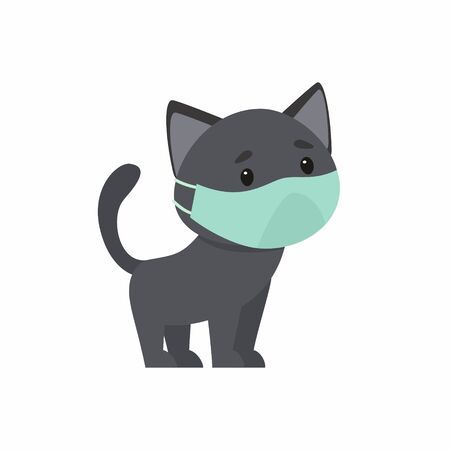To Vaccinate or NOT Vaccinate — That IS the question!
Content Courtesy of AAHA;AAHA.org
The recent debates about human vaccine safety have left many pet owners wondering whether their dogs and cats should be vaccinated. The short answer is: Yes, definitely! Pets should receive core vaccines—those medically necessary for all pets—and may need others depending on their lifestyle.
No medication is without risk, but the benefits of vaccinating pets certainly outweigh the few risks because many common vaccinations in pets protect against devastating diseases, such as rabies, and even death. Vaccinations not only protect pets, they are also a component of human disease prevention. Approximately 59,000 people worldwide die each year from rabies, according to the World Health Organization, but only one or two deaths occur in the US, where laws require pets to be vaccinated and more than $300 million is spent annually on rabies prevention. Widespread vaccination means that few pets get rabies and few humans are exposed. More than 95% of rabies deaths occur in Africa and Asia, which lack successful vaccination programs.
What are the risks of vaccinating my pet?
The most likely vaccination complications include tissue swelling around the injection site; mild signs of illness such as fever, lethargy, and soreness; and allergic reactions to the vaccine that can range from mild to life-threatening. The likelihood of a dangerous reaction is low, whereas the likelihood of your pet developing a life-threatening disease if he is not vaccinated is much higher.
What determines which vaccines my pet should receive?
To determine whether a pet should be vaccinated against a particular disease, your veterinarian will assess his exposure risk, including:
- Age: A specific vaccination protocol is necessary to help puppies and kittens build resistance to disease while the immunity passed from their mothers wears off. After the initial vaccine series, booster vaccines are required for adult pets to maintain immunity.
- Geography: Exposure risk to some diseases is higher in some geographic areas; for example, Lyme disease is most prevalent in heavily wooded areas, such as the Northeast.
- Lifestyle: Cats who live solely indoors with no contact with other cats have little risk of exposure to feline leukemia and may not need this vaccination. But if your cat goes outside, spends time at a boarding facility, or has contact with outside cats brought into your home, he has a higher exposure risk and should be vaccinated.
Which core vaccines should my dog receive?
According to the AAHA Canine Vaccination Guidelines, core vaccines for dogs include:
- Canine distemper: Affects the respiratory and nervous systems, and often is fatal
- Infectious hepatitis: Caused by adenovirus type-1, hepatitis can lead to acute or chronic liver inflammation
- Parvovirus: Causes severe vomiting, diarrhea, and dehydration as well as life-threatening sepsis in unprotected puppies
- Rabies: Causes progressive neurological problems and death, is transmitted when an infected animal bites, and can be transmitted to humans
Visit AAHA’s Lifestyle-Based Vaccine Calculator to learn why your veterinarian may recommend the following additional vaccines for your dog based on where she lives, her age, and her lifestyle:
- Lyme disease: Transmitted by the blacklegged tick (Ixodes scapularis) and prevalent in wooded areas
- Leptospirosis: Caused by bacteria shed in the urine of infected wild animals; pets and humans become infected by exposure to contaminated outdoor water sources and can develop kidney and liver failure
- Bordetella bronchiseptica: Causes kennel cough, a respiratory infection common in shelter dogs
- Parainfluenza virus: Causes respiratory infection in dogs; a single vaccine combining parainfluenza and Bordetella can protect against kennel cough
- Canine influenza virus: Recently shown to cause respiratory infection; vaccination is recommended for dogs exposed to other dogs outside the home
- Western diamondback rattlesnakes: Recommended for dogs who live in or visit areas inhabited by rattlesnakes
Which core vaccines should my cat receive?
According to the American Association of Feline Practitioners feline vaccination guidelines, core vaccines for cats include:
- Feline herpesvirus-1/feline viral rhinotracheitis: Causes infectious respiratory disease and lifelong infection that leads to recurrent flare-ups
- Calicivirus: Also causes respiratory disease, often characterized by oral and nasal ulcers
- Panleukopenia: Causes life-threatening blood cell deficiencies, vomiting, diarrhea, and dehydration, as well as brain damage to kittens infected in utero
Additional vaccines that cats may need based on their lifestyle include:
- Rabies: Considered a noncore vaccine, but required by law in many states for both dogs and cats
- Feline leukemia: Can cause lifelong infection that leads to a weakened immune system and chronic illness
- Chlamydophila felis: Causes feline respiratory infection often characterized by severe conjunctivitis
- Bordetella bronchiseptica: Another cause of bacterial respiratory infection in cats
- Feline immunodeficiency virus (FIV): Contracted when a cat is bitten during a cat fight, FIV causes immunosuppression and chronic illness
- Feline infectious peritonitis: A fatal disease that causes fluid buildup in the thoracic and abdominal cavities
Vaccination is the most reliable method of disease prevention and poses few risks. Ask your veterinarian which vaccines your pet should receive.






